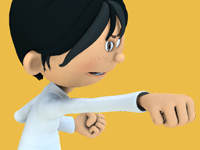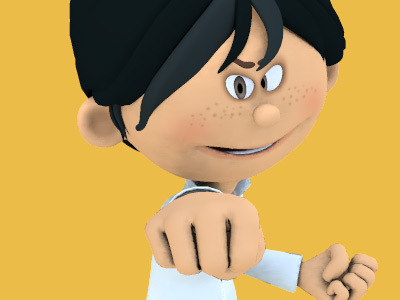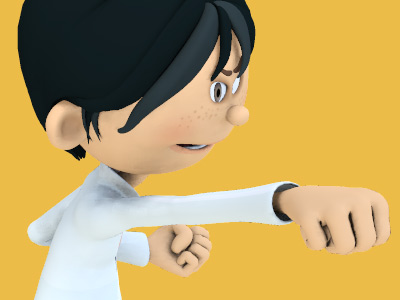Tournament
In tournaments Kumite often takes place inside of a 'ringed' area similar to that of a boxing ring. If a karateka steps out of the ring, they are given a warning. If they step out of the ring two times, the other person gains a point. Many international tournaments use a "point sparring" form of kumite that requires control ('pulling punches') and therefore warnings can be dealt for excessive force on techniques to the head, or sensitive areas. Full contact is permitted to the torso area of the body only. Some tournament rules allow for light contact to the head, whereas other rules do not allow this.
Kumite also includes a series of guidelines that, if followed correctly, result in a clean and safe fight. These are some of those guidelines:
- A karateka must remain in some form of proper fighting stance and in the Kamae-Te position (hands up, ready to fight position)
- A karateka must be aware of all obstacles around him/her
- A karateka must never deliberately endanger themselves by turning their back to their opponent
- A practiced and well trained karateka must concentrate on stance and footwork
For the last point about stance and footwork: it is often taught that a karateka who wishes to be fast and agile while competing in Kumite should always be 'pulsing'. Pulsing is where the karateka remains almost bouncing on the balls of their feet to maintain minimal frictional contact with the ground, allowing them to move quickly.
Another aspect of Kumite which is often seen in international tournaments, as well as many local competitions is what is referred to as clashing. Clashing is where both opponents throw techniques against each other at the same time, often resulting in both getting hit with the techniques. This creates a problem for referees as they are unable to make out which technique was quick, on target and recoiled - all the things that constitute a clean technique that is scored. Because of clashing, most modern day Karateka's are taught to practice kumite in a 'one for one' situation where one attacks, then the other attacks and so on. However due to the speed of these techniques, and the speed of the footwork of each Karateka, to the casual observer it may appear that they are still clashing when in fact they are not. When opponents are considered to be clashing, the head referee should declare "aiuchi" which means "simultaneous hit". When a winner is decided, the referee will announce "no kachi" which means "~'s win".
The tournament rules of full contact or "knockdown" styles of karate often don't award any points for controlled techniques delivered to the opponent. In fact, they usually don't award points for full-force techniques delivered to the opponent either. Instead, points are only awarded for knocking, sweeping, or throwing your opponent to the floor. Kyokushinkai and its "offshoot" karate organizations are the styles usually known to promote knockdown tournament rules. They believe this type of tournament competition is closer to "real life" personal combat, although still in a tournament setting with rules.
Criticisms against point sparring or tournament sparring are many and widespread. The most obvious is the quickness vs. skill argument whereas the tournament fighter learns how to shoot in quickly and deliver an unimpressive strike that gains him or her a point. This is seen mainly in Olympic style fighting such as with Taekwondo. The other criticism is the face contact, which allows for disqualification if the opponent's face is discolored. This is a rather dubious requirement as it is often difficult to gauge the true intensity of the attack. Last, tournament or point sparring is seen as sport and sport alone. Traditionalists may dismiss it as "useless", but modern dojos often band with other dojos to form organizations that utilize a tournament circuit as a way to promote their dojos.
SPORTS

RESOURCES
This article uses material from the Wikipedia articles "Karate" and "Kumite", which is released under the Creative Commons Attribution-Share-Alike License 3.0.
© Stories Preschool. All Rights Reserved.










